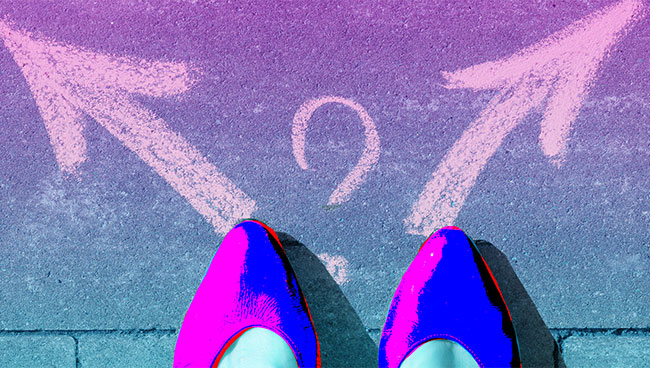During the months of the pandemic we have seen an acceleration of shopping behaviors that were already underway, while other more traditional practices are slipping away. One finding is clear: Retailers have proven how effectively they can adapt, and there is no going back.
Keep Improving, Retail. The Bar is Rising.
Just as no good deed goes unpunished, no good retail practice goes unnoticed by shoppers. Consumers are in fact turning many newly offered services and goods into must-haves almost as quickly as they roll out.
The pandemic is a case study in such reactions. Rather than undermine certain consumer behaviors that were emerging well before 2020 – such as healthier living and saving time – the health crisis just helped shoppers figure out how to get what they want more conveniently, and on their terms.
According to our latest How America Shops® report, “Shopping Next: What Will Stick or Slip,” shoppers are holding onto many of the values they had going into COVID. Despite how much the pandemic has upended our lives, these consumer behaviors will stick:
- “Me Time” as a premium. When it comes to savings, what shoppers say and what they do differ. Six in 10 told us they always buy the lowest price, yet 60% also agree they will overlook low price to make shopping, easier. This higher-value “Me Time” will have a lasting influence on shopping.
- The influence of “better for us” goods. Two in five shoppers who were committed to clean, natural and socially responsible choices in November 2019 are still committed to paying more for products that meet these values today.
- The drivers behind store choices: Often in a crisis shoppers will switch to lower-priced stores to save for the unknown, but that’s not what most shoppers are doing in this crisis. Two-thirds of shoppers do not plan to switch the stores where they buy their goods. Of the one-third who do plan to change, their reasons are equally divided between wanting lower prices and choosing where to get in and out quickly – more evidence of the power of “Me Time” as well as staying safe.
- Digital tool adoption: The use of tools that support easier, faster and contactless shopping accelerated through the pandemic, and more than 70% of shoppers plan to continue with online shopping and telehealth going forward. Once they find an easier way, there is no going back.
So Then, What’s Slipping?
Our report revealed some retail and brand watch-out areas, but these “slipping” behaviors present opportunities as well:
- Category spending will change: 35% of shoppers told us they are financially pessimistic, which will effect some categories more than others. For example: Half of buyers will cut spending on cosmetics, fragrances and fee-based apps; one-third will cut back on over-the-counter medications and skin care; and 25% will spend less on haircare products. Opportunity: Retailers and brands should plan for more shoppers to become financially insecure in the near-term and promote lower-priced brands or lower-priced choices within popular brands.
- National brand loyalty is at risk. Trust in national name brands declined to 67% in November 2020 from 75% in March 2018. In that same period of time, the trust gap between national brands and private labels narrowed to 11 ppts from 19 ppts. Opportunity: Brands can no longer rely on the trust in their heritage; brands need to connect with shoppers by offering the values important to shoppers, like being “free from” harmful ingredients, as well as placing more emphasis on being “interesting” and something shoppers are proud to serve.
- Digital tool gets comfortable. Yes, this is a behavior that will stick, but what is slipping is the old apprehensions of using it. More shoppers of all ages tried web-enabled tools for shopping and healthcare during the pandemic, and most plan to continue using them. Opportunity: The timing is beyond ripe to make every element of a retailer and/or brand experience immediately accessible on a device – handheld or voice activated, with or without a screen.
Lastly, retailers and brands will do well to build every experience with the flexibility to shift with whatever tomorrow brings. Make no mistake: These “Stick and Slip” shopper behaviors are in response to retail’s impressively rapid reaction to pandemic changes, and they all should be addressed. We have seven suggestions for doing so. You can learn them by accessing our report.


